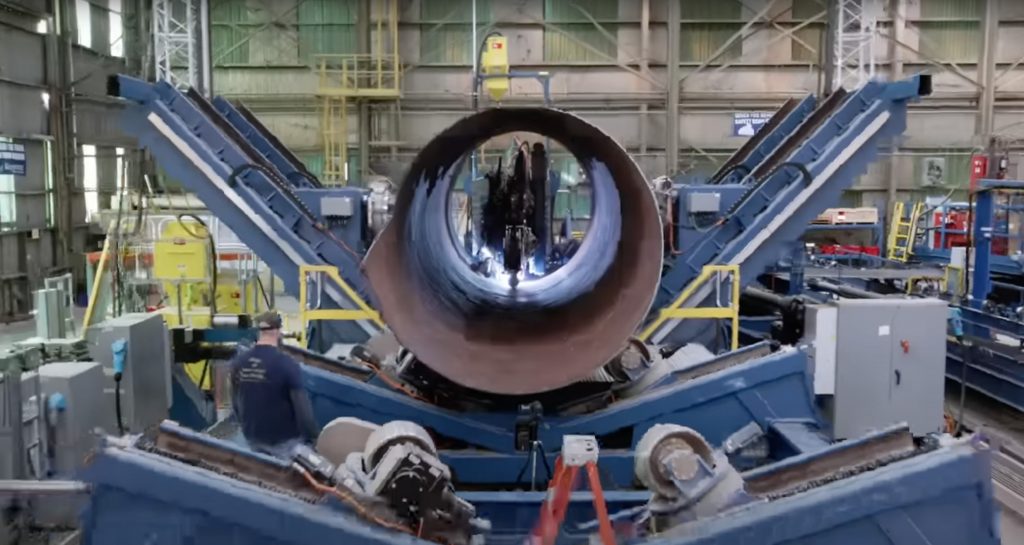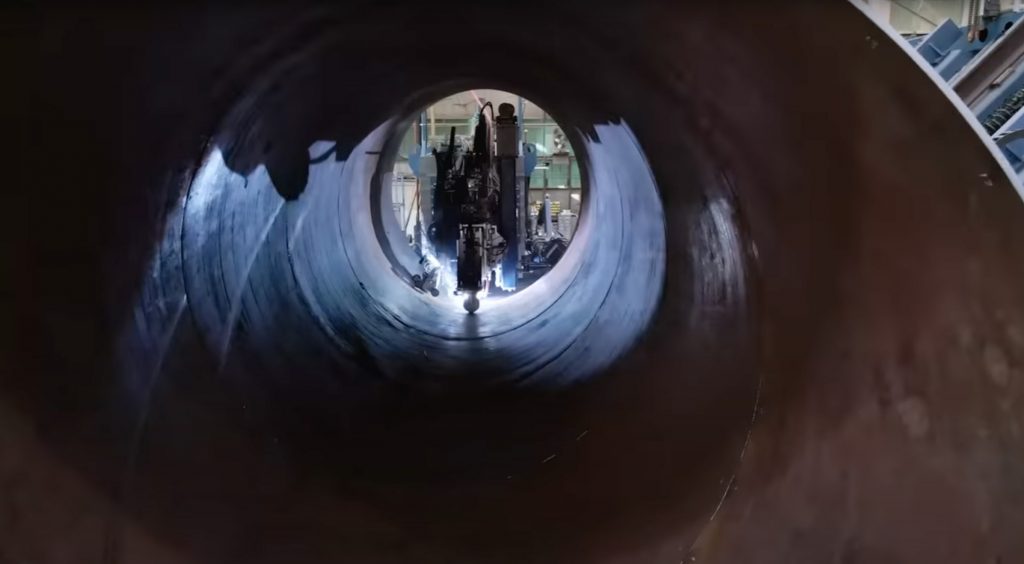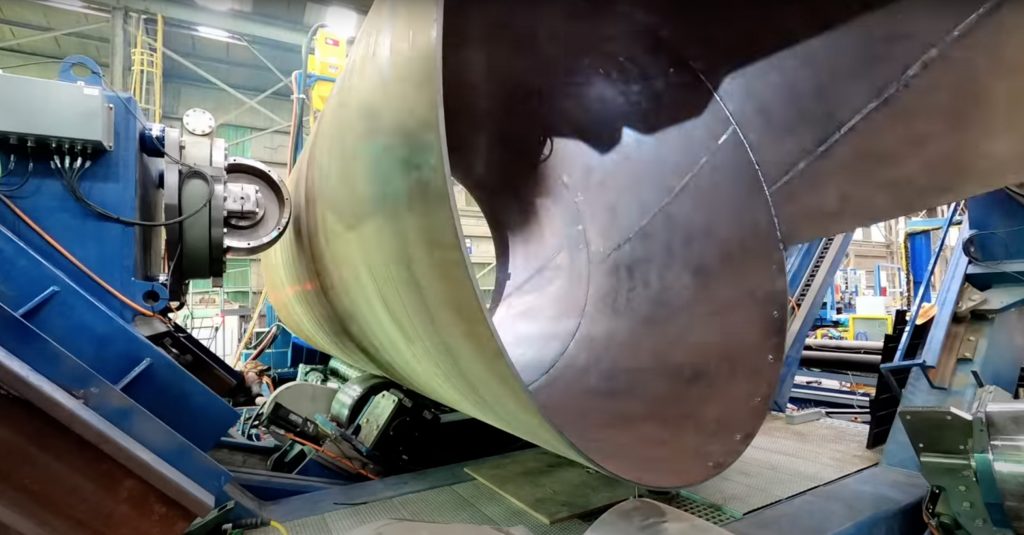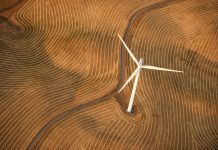Manufacturing costs and logistics are two challenges to rapidly integrating more renewable energy into the U.S. power system. This is especially true for tall land-based wind turbines, but Colorado-based Keystone Tower Systems is changing how wind turbines can be manufactured, transported, and installed.
Taller land-based wind turbines harness and generate more power than shorter ones, because they can access faster wind speeds at greater heights. But larger wind turbines are harder to construct and require more steel to build. They’re also difficult and costly to transport from the manufacturing plant to the wind farm, because the tower is often too large to fit under highway overpasses or across bridges.

DOE Assistance
With more than $7 million from the U.S. Department of Energy (DOE), Keystone Tower Systems has developed a solution: a spiral-welding technique, borrowed from the steel-pipeline industry, to build some of the largest turbine towers on the market. Spiral welding is when the steel used to make the tower is curled into a cylinder; essentially, these towers are built from meters-wide steel plates.
The technique requires only one machine to construct a tower section, and it can produce towers up to twice as tall and 10 times faster than conventional towers. These towers are produced using less steel, so they could be more affordable than conventional towers, too. They can even be manufactured on site at the wind farm, eliminating transportation issues.
Keystone’s cofounder and CEO Eric Smith, an expert in machine design and the wind industry, and his 75 staff members built Keystone’s first spiral-welded tower for a 2.98-MW GE wind turbine. This is the first spiral-welded wind tower in commercial use, representing a significant advancement in overcoming key obstacles to bringing affordable wind energy to more locations throughout the United States.
 Multi-year Collaboration
Multi-year Collaboration
The installation was the result of a multi-year collaboration between Keystone and GE to design and produce spiral-welded towers for GE wind turbines.
The tower was manufactured at Keystone’s factory in Pampa, Texas, in the Texas Panhandle. The brownfield factory was built at an idled facility that formerly made drilling equipment for the oil-and-gas industry and will ultimately bring back nearly 200 manufacturing jobs to the region. When at full capacity, the factory will be capable of producing about 1 GW of towers per year. This increase in domestic manufacturing capacity is coming online at a critical time with a significant expansion in need for wind-turbine components driven by the passage of the Inflation Reduction Act.
Keystone’s tapered spiral welding process brings the speed, quality, and consistency of automated manufacturing to wind-tower manufacturing. Keystone designs and builds its own custom spiral welding manufacturing equipment. The manufacturing process is designed to use coil steel, enabling a new segment of highly efficient domestic steel mills to supply into the wind industry.
Before the Keystone team could even dream of building tall wind-turbine towers, they successfully competed for funding through the Small Business Innovation Research program. From 2012 to 2019, they were awarded $3.7 million to design the manufacturing process and show the company’s potential for cost-effective expansion.
Then, in 2019, DOE’s Wind Energy Technologies Office awarded Keystone $5 million to demonstrate its 160-meter spiral-welded tall wind-turbine tower. Keystone worked with wind-turbine manufacturing partners to design a commercial-scale tower ready for installation. Smith said it hasn’t been easy being a small business in the wind industry.
“There’s no way to be competitive unless your business is super large, so it’s difficult to start from nothing, which is why support from DOE has been integral,” he said

Production Ramping Up
Keystone is now ramping up production of spiral welded towers, with additional deliveries scheduled for the first quarter of 2023. The first product is an 89-meter-tall spiral welded tower for the GE 2.8-127 turbine, designed to be used interchangeably with GE’s conventional 89-meter-tall tower. The spiral tower received a component certification from TÜV NORD for a 40-year lifetime. Keystone and GE have also collaborated on a tower design for the GE’s 3-MW turbine platform and have signed a multi-year supply agreement for spiral towers from Keystone’s Pampa factory.
“This is the culmination of a dream we had to bring advanced manufacturing to the tower industry to help drive down the cost of wind energy and expand where wind is competitive into new regions,” Smith said. “I’m very proud of the years of hard work our team has invested in developing and scaling up tapered spiral welding.”
Keystone Tower Systems is just one example of the importance of funding innovative small businesses as the nation transitions to a clean-energy economy.
“This collaboration with Keystone is an example of GE’s commitment to working with partners to bring new and innovative technology to the wind industry and advance domestic manufacturing,” said Vic Abate, GE Renewable Energy’s CEO, Onshore Wind. “We are delighted to be a part of this exciting opportunity for our workhorse products, with the goal of providing affordable, sustainable renewable energy to our customers and helping to deliver on the energy transition.”
More info keystonetowersystems.com



























